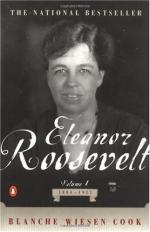|
This section contains 335 words (approx. 1 page at 400 words per page) |

|
1920: Women are allowed to vote for the first time; politicians, especially Republicans, court the women's vote. A National Women's Party exists as an alternative to the Democrats and Republicans. Many feminists, not including Eleanor Roosevelt, believe the two major parties will betray their interests.
Today: The targeting of female voters by political parties becomes very sophisticated. In the presidential election of 1996, both parties seek to win over the "soccer moms"; in 2000, women independent voters are considered one of the key groups. There is a "gender gap" among voters: women are more likely to be Democrats than men are.
1920s: In a period of social change following World War I, the percentage of women in the workforce rises above the turn of the century figure of 20 percent.
Today: More than 75 percent of women age 25-44 are in the workforce. However, women's earnings still lag behind...
|
This section contains 335 words (approx. 1 page at 400 words per page) |

|




